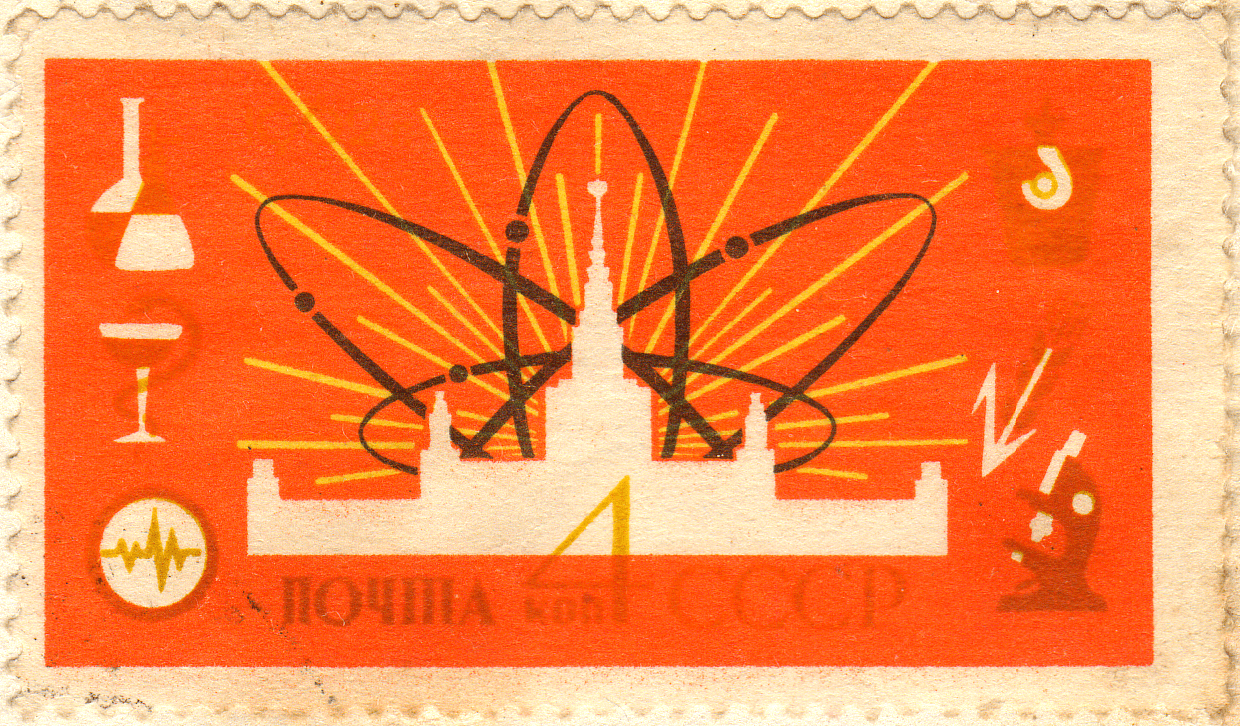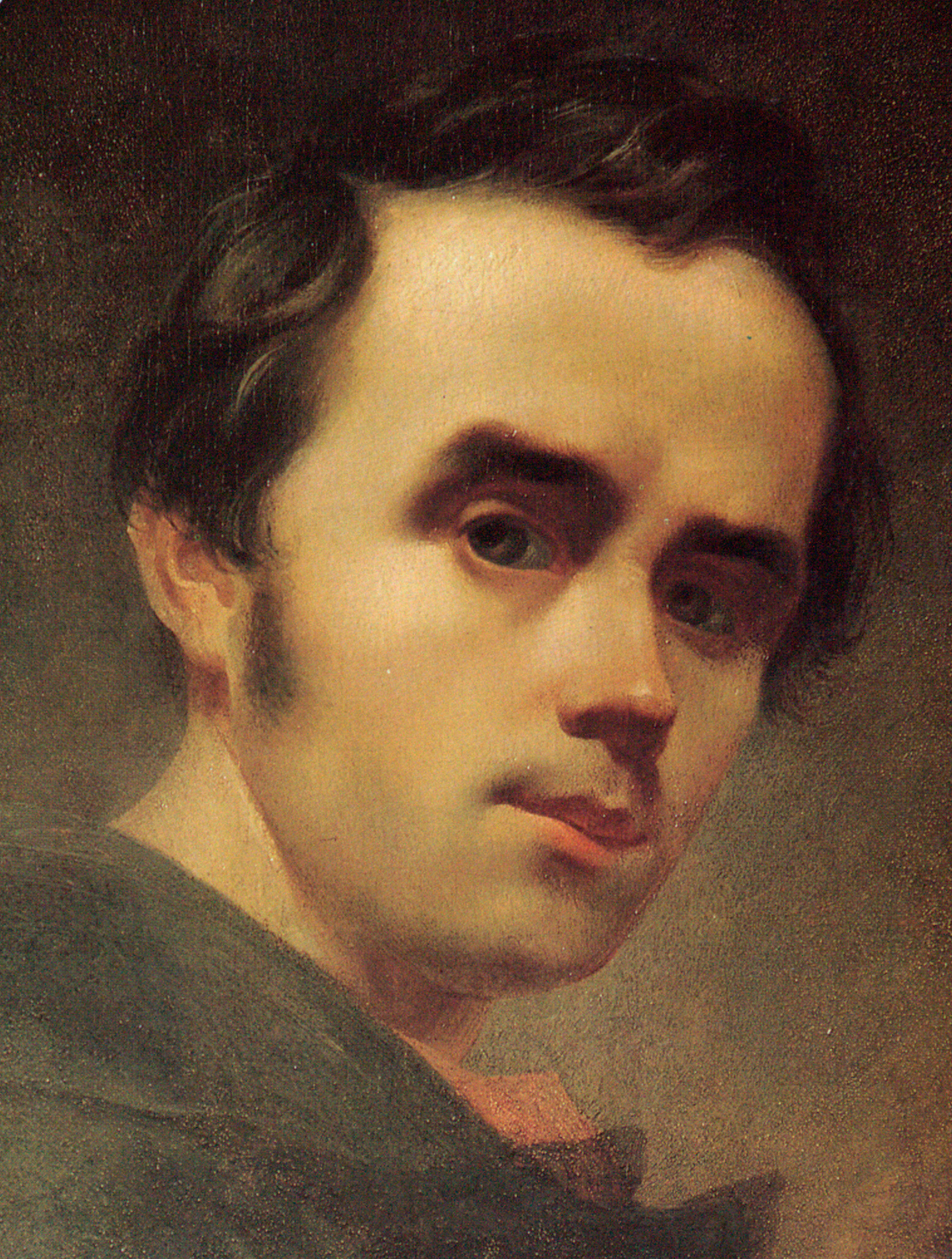|
Viktor Hlushkov
Victor Mikhailovich Glushkov (; August 24, 1923 – January 30, 1982) was a Soviet computer scientist. He is considered to be the founding father of information technology in the Soviet Union and one of the founding fathers Soviet cybernetics. Biography He was born in Rostov-on-Don, Russian SFSR, in the family of a mining engineer. Glushkov graduated from Rostov State University in 1948, and in 1952 proposed solutions to Hilbert's fifth problem and defended his thesis at Moscow State University. In 1956, he began working with computers and worked in Kiev as a Director of the Computational Center of the Academy of Science of Ukraine. In 1958, he became a member of the Communist Party. In 1962, Glushkov established the famous Institute of Cybernetics of the National Academy of Science of Ukraine and became its first director. He made contributions to the theory of automata. He and his followers (Kapitonova, Letichevskiy and others) successfully applied that theory to enhance ... [...More Info...] [...Related Items...] OR: [Wikipedia] [Google] [Baidu] |
Rostov-on-Don
Rostov-on-Don is a port city and the administrative centre of Rostov Oblast and the Southern Federal District of Russia. It lies in the southeastern part of the East European Plain on the Don River, from the Sea of Azov, directly north of the North Caucasus. The southwestern suburbs of the city lie above the Don river delta. Rostov-on-Don has a population of over one million people and is an important cultural, educational, economic and logistical centre of Southern Russia. History Early history From ancient times, the area around the mouth of the Don River has held cultural and commercial importance. Ancient indigenous inhabitants included the Scythian and Sarmatian tribes. It was the site of Tanais, an ancient Greek colony, Fort Tana under the Genoese, and Fort Azak in the time of the Ottoman Empire. In 1749, a custom house was established on the Temernik River, a tributary of the Don, by edict of the Empress Elizabeth, the daughter of Peter the Great, in orde ... [...More Info...] [...Related Items...] OR: [Wikipedia] [Google] [Baidu] |
Moscow State University
Moscow State University (MSU), officially M. V. Lomonosov Moscow State University,. is a public university, public research university in Moscow, Russia. The university includes 15 research institutes, 43 faculties, more than 300 departments, and six branches. Alumni of the university include past leaders of the Soviet Union and other governments. As of 2019, 13 List of Nobel laureates, Nobel laureates, six Fields Medal winners, and one Turing Award winner were affiliated with the university. History Imperial Moscow University Ivan Shuvalov and Mikhail Lomonosov promoted the idea of a university in Moscow, and Elizabeth of Russia, Russian Empress Elizabeth decreed its establishment on . The first lectures were given on . Saint Petersburg State University and MSU each claim to be Russia's oldest university. Though Moscow State University was founded in 1755, St. Petersburg which has had a continuous existence as a "university" since 1819 sees itself as the successor of an a ... [...More Info...] [...Related Items...] OR: [Wikipedia] [Google] [Baidu] |
National Taras Shevchenko University Of Kyiv
The Taras Shevchenko National University of Kyiv (; also known as Kyiv University, Shevchenko University, or KNU) is a public university in Kyiv, Ukraine. The university is the third-oldest university in Ukraine after the University of Lviv and the University of Kharkiv. Its structure consists of 15 faculties and five institutes. The university was founded in 1834 by Nicholas I of Russia as the Saint Vladimir Imperial University of Kiev; it has since changed its name several times. During the Soviet Union era, Kiev State University was one of the top three universities in the USSR, along with Moscow State University and Leningrad State University. It is ranked as the best university in Ukraine in many rankings. Its alumni include Mykola Lysenko, Nikolay Bunge, Mykhailo Drahomanov, Mykhailo Hrushevskyi, Nikolai Berdyaev, Mikhail Bulgakov, Ivan Schmalhausen, Theodosius Dobzhansky, Viacheslav Chornovil, and Leonid Kravchuk. The university is named after Taras Shevchenko, who was ba ... [...More Info...] [...Related Items...] OR: [Wikipedia] [Google] [Baidu] |
Moscow Institute Of Physics And Technology
Moscow Institute of Physics and Technology (MIPT; , also known as PhysTech), is a public university, public research university located in Moscow Oblast, Russia. It prepares specialists in theoretical physics, theoretical and applied physics, applied mathematics and related disciplines. The main MIPT campus is located in Dolgoprudny, a northern suburb of Moscow. However the Department of Aeromechanics and Flight Engineering of MIPT, Aeromechanics Department is based in Zhukovsky (city), Zhukovsky, a suburb south-east of Moscow. As Phystech's founder, Pyotr Kapitsa, designed the institute inspired by and in accordance with the Massachusetts Institute of Technology model, Phystech is commonly hailed as the "MIT of Russia" and is considered to be the leading specialized technical institution of higher education in the former Soviet Union. Nikolay Kudryavtsev (Кудрявцев Николай Николаевич]), the president of the Moscow Institute of Physics and Technology ... [...More Info...] [...Related Items...] OR: [Wikipedia] [Google] [Baidu] |
Control Theory
Control theory is a field of control engineering and applied mathematics that deals with the control system, control of dynamical systems in engineered processes and machines. The objective is to develop a model or algorithm governing the application of system inputs to drive the system to a desired state, while minimizing any ''delay'', ''overshoot'', or ''steady-state error'' and ensuring a level of control Stability theory, stability; often with the aim to achieve a degree of Optimal control, optimality. To do this, a controller with the requisite corrective behavior is required. This controller monitors the controlled process variable (PV), and compares it with the reference or Setpoint (control system), set point (SP). The difference between actual and desired value of the process variable, called the ''error'' signal, or SP-PV error, is applied as feedback to generate a control action to bring the controlled process variable to the same value as the set point. Other aspects ... [...More Info...] [...Related Items...] OR: [Wikipedia] [Google] [Baidu] |
Centrally Planned Economies
A planned economy is a type of economic system where investment, production and the allocation of capital goods takes place according to economy-wide economic plans and production plans. A planned economy may use centralized, decentralized, participatory or Soviet-type forms of economic planning. The level of centralization or decentralization in decision-making and participation depends on the specific type of planning mechanism employed. Socialist states based on the Soviet model have used central planning, although a minority such as the former Socialist Federal Republic of Yugoslavia have adopted some degree of market socialism. Market abolitionist socialism replaces factor markets with direct calculation as the means to coordinate the activities of the various socially owned economic enterprises that make up the economy. More recent approaches to socialist planning and allocation have come from some economists and computer scientists proposing planning mechanisms based ... [...More Info...] [...Related Items...] OR: [Wikipedia] [Google] [Baidu] |
Socialism
Socialism is an economic ideology, economic and political philosophy encompassing diverse Economic system, economic and social systems characterised by social ownership of the means of production, as opposed to private ownership. It describes the Economic ideology, economic, Political philosophy, political, and Social theory, social theories and Political movement, movements associated with the implementation of such systems. Social ownership can take various forms, including State ownership, public, Community ownership, community, Collective ownership, collective, cooperative, or Employee stock ownership, employee.: "Just as private ownership defines capitalism, social ownership defines socialism. The essential characteristic of socialism in theory is that it destroys social hierarchies, and therefore leads to a politically and economically egalitarian society. Two closely related consequences follow. First, every individual is entitled to an equal ownership share that earns an ... [...More Info...] [...Related Items...] OR: [Wikipedia] [Google] [Baidu] |
Computer Network
A computer network is a collection of communicating computers and other devices, such as printers and smart phones. In order to communicate, the computers and devices must be connected by wired media like copper cables, optical fibers, or by wireless communication. The devices may be connected in a variety of network topologies. In order to communicate over the network, computers use agreed-on rules, called communication protocols, over whatever medium is used. The computer network can include personal computers, Server (computing), servers, networking hardware, or other specialized or general-purpose Host (network), hosts. They are identified by network addresses and may have hostnames. Hostnames serve as memorable labels for the nodes and are rarely changed after initial assignment. Network addresses serve for locating and identifying the nodes by communication protocols such as the Internet Protocol. Computer networks may be classified by many criteria, including the tr ... [...More Info...] [...Related Items...] OR: [Wikipedia] [Google] [Baidu] |
OGAS
OGAS (, "National Automated System for Computation and Information Processing") was a Soviet project to create a nationwide information network. The project began in 1962 but was denied necessary funding in 1970. It was one of a series of socialist attempts to create a nationwide cybernetic network. The US government in 1962 regarded the project as a major threat due to the “tremendous increments in economic productivity” which could disrupt the world market. Arthur Schlesinger Jr, historian and special assistant to President Kennedy, described “an all out Soviet commitment to cybernetics” as providing the Soviet Union a “tremendous advantage” in respect to production technology, complex of industries, feedback control and self-teaching computers. Concept The primary architect of OGAS was Viktor Glushkov. A previous proposal for a national computer network to improve central planning, Anatoly Kitov's Economic Automated Management System, had been rejected in ... [...More Info...] [...Related Items...] OR: [Wikipedia] [Google] [Baidu] |
Soviet Academy Of Sciences
The Academy of Sciences of the Soviet Union was the highest scientific institution of the Soviet Union from 1925 to 1991. It united the country's leading scientists and was subordinated directly to the Council of Ministers of the Soviet Union (until 1946 the Council of People's Commissars of the Soviet Union). In 1991, by the decree of the President of the Russian Soviet Federative Socialist Republic, the Russian Academy of Sciences was established on the basis of the Academy of Sciences of the Soviet Union. History Creation of the Academy of Sciences of the Soviet Union The Academy of Sciences of the Soviet Union was formed by a resolution of the Central Executive Committee and the Council of People's Commissars of the Soviet Union dated July 27, 1925, on the basis of the Russian Academy of Sciences (before the February Revolution – the Imperial Saint Petersburg Academy of Sciences). In the first years of Soviet Russia, the Institute of the Academy of Sciences was perceived r ... [...More Info...] [...Related Items...] OR: [Wikipedia] [Google] [Baidu] |
Theory Of Automata
Automata theory is the study of abstract machines and automaton, automata, as well as the computational problems that can be solved using them. It is a theory in theoretical computer science with close connections to cognitive science and mathematical logic. The word ''automata'' comes from the Greek language, Greek word αὐτόματος, which means "self-acting, self-willed, self-moving". An automaton (automata in plural) is an abstract self-propelled computing device which follows a predetermined sequence of operations automatically. An automaton with a finite number of State (computer science), states is called a finite automaton (FA) or finite-state machine (FSM). The figure on the right illustrates a finite-state machine, which is a well-known type of automaton. This automaton consists of State (computer science), states (represented in the figure by circles) and Transition (computer science), transitions (represented by arrows). As the automaton sees a symbol of input ... [...More Info...] [...Related Items...] OR: [Wikipedia] [Google] [Baidu] |








